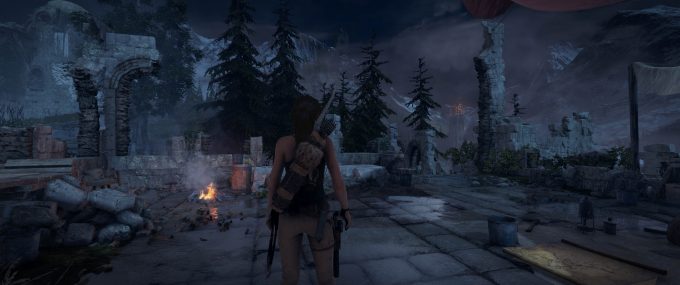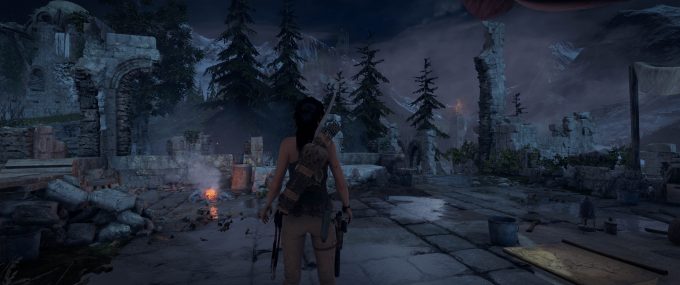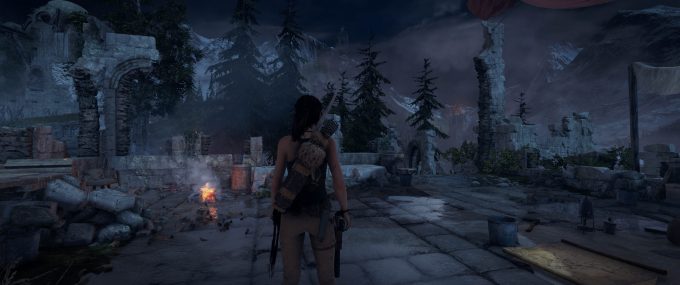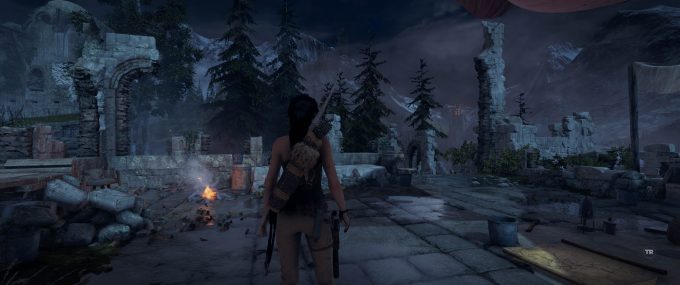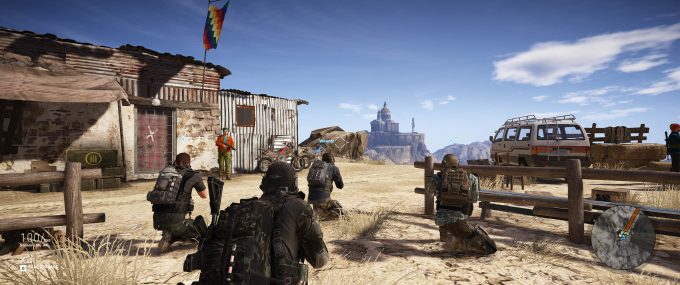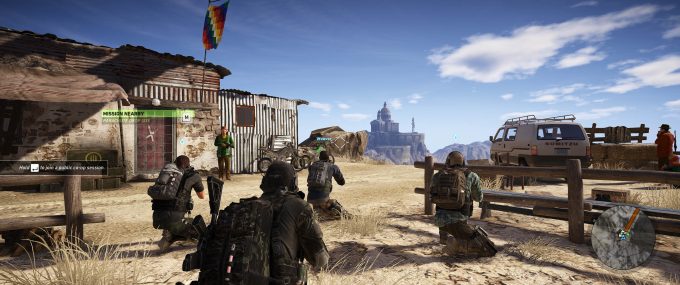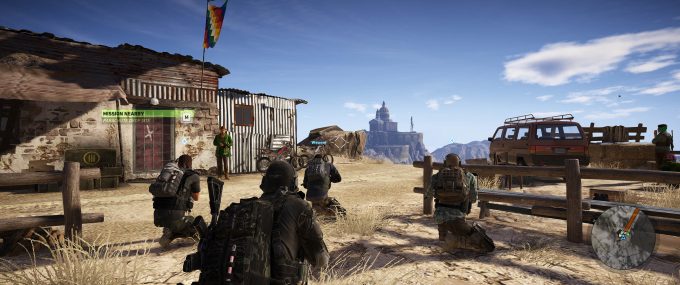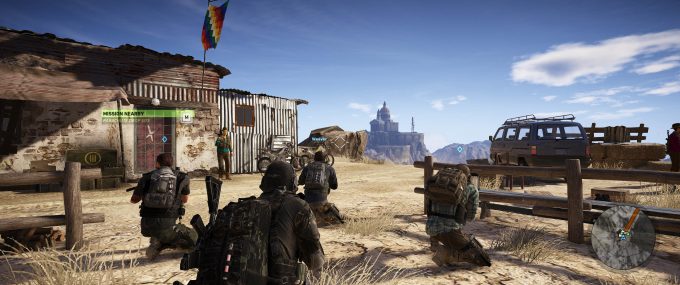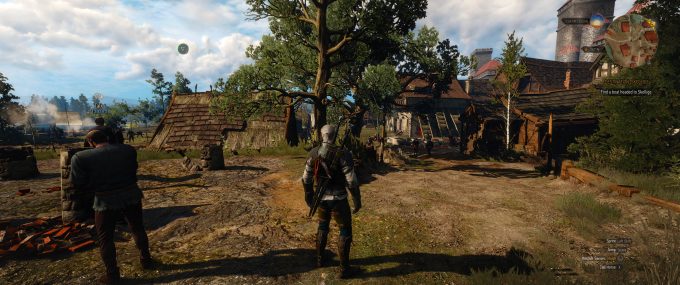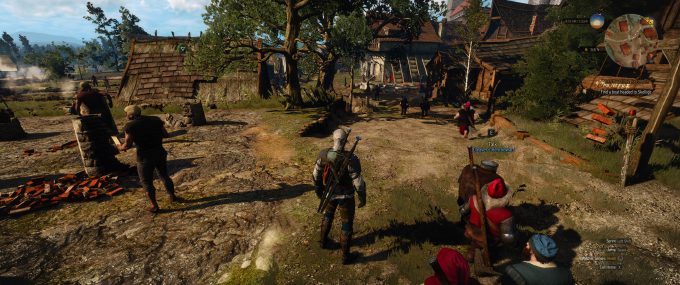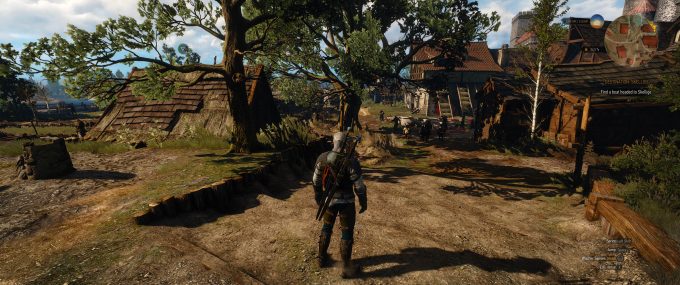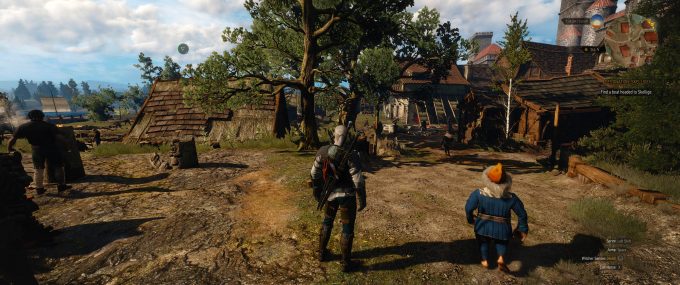- Qualcomm Launches Snapdragon 4 Gen 2 Mobile Platform
- AMD Launches Ryzen PRO 7000 Series Mobile & Desktop Platform
- Intel Launches Sleek Single-Slot Arc Pro A60 Workstation Graphics Card
- NVIDIA Announces Latest Ada Lovelace Additions: GeForce RTX 4060 Ti & RTX 4060
- Maxon Redshift With AMD Radeon GPU Rendering Support Now Available
AMD Radeon RX Vega 64 & 56 Best Playable Settings At 4K & Ultrawide

We’ve taken a look at AMD’s latest top-end Radeon in workstation and compute scenarios, and now, the attention is turned to gaming. In this Vega review follow-up, we’re going to look at the “Best Playable” settings for both the Vega 64 and GTX 1080 at 4K, as well as ultrawide, adding Vega 56 and GTX 1070 to the mix.
Page 2 – Best Playable @ 3440×1440 (Page 2) – RX Vega 64 & 56, GTX 1080 & 1070
Rise of the Tomb Raider
| Rise of the Tomb Raider (DX12) – RX Vega 64 | |||
| Minimum | Average | ||
| 53 | 61 | ||
| Resolution: | 3440 x 1440 | Anti-Aliasing: | FXAA |
| Texture Quality: | Very High | Anisotropic Filter: | 16x |
| Shadow Quality: | High | Sun Soft Shadows: | On |
| Ambient Occlusion: | On | Depth of Field: | On |
| Level of Detail: | Very High | Tessellation: | On |
| SS Reflections: | On | Specular Reflection: | Normal |
| Dynamic Foliage: | High | Bloom: | On |
| Vignette Blur: | On | Motion Blur: | On |
| Purehair: | Very High | Lens Flares: | On |
| Screen Effects: | On | Film Grain: | On |
| Rise of the Tomb Raider (DX12) – GTX 1080 | |||
| Minimum | Average | ||
| 36 | 60 | ||
| Resolution: | 3440 x 1440 | Anti-Aliasing: | FXAA |
| Texture Quality: | Very High | Anisotropic Filter: | 16x |
| Shadow Quality: | High | Sun Soft Shadows: | On |
| Ambient Occlusion: | HBAO+ | Depth of Field: | On |
| Level of Detail: | Very High | Tessellation: | On |
| SS Reflections: | On | Specular Reflection: | Very High |
| Dynamic Foliage: | High | Bloom: | On |
| Vignette Blur: | On | Motion Blur: | On |
| Purehair: | Very High | Lens Flares: | On |
| Screen Effects: | On | Film Grain: | On |
| Rise of the Tomb Raider (DX12) – RX Vega 56 | |||
| Minimum | Average | ||
| 49 | 59 | ||
| Resolution: | 3440 x 1440 | Anti-Aliasing: | FXAA |
| Texture Quality: | Very High | Anisotropic Filter: | 16x |
| Shadow Quality: | High | Sun Soft Shadows: | On |
| Ambient Occlusion: | On | Depth of Field: | On |
| Level of Detail: | High | Tessellation: | On |
| SS Reflections: | On | Specular Reflection: | Normal |
| Dynamic Foliage: | High | Bloom: | On |
| Vignette Blur: | On | Motion Blur: | On |
| Purehair: | Very High | Lens Flares: | On |
| Screen Effects: | On | Film Grain: | On |
| Rise of the Tomb Raider (DX12) – GTX 1070 | |||
| Minimum | Average | ||
| 48 | 60 | ||
| Resolution: | 3440 x 1440 | Anti-Aliasing: | FXAA |
| Texture Quality: | Very High | Anisotropic Filter: | 16x |
| Shadow Quality: | High | Sun Soft Shadows: | On |
| Ambient Occlusion: | On | Depth of Field: | On |
| Level of Detail: | High | Tessellation: | On |
| SS Reflections: | On | Specular Reflection: | Normal |
| Dynamic Foliage: | High | Bloom: | On |
| Vignette Blur: | On | Motion Blur: | On |
| Purehair: | Very High | Lens Flares: | On |
| Screen Effects: | On | Film Grain: | On |
At 3440×1440, the GTX 1080 handles RotTR a bit better than Vega 64, being able to use improved specular reflections, and HBAO+ over the default ambient occlusion method. The GTX 1080 had a reduced minimum FPS over the Vega 64, but that’s something that could honestly change between runs (the game loves to hitch at absolutely random moments).
When details are slightly reduced, the game hits an easy 60 FPS on the Vega 56 and GTX 1070, sharing the same settings. Here, performance between the two cards is even closer than the others.
Tom Clancy’s Ghost Recon: Wildlands
| Tom Clancy’s Ghost Recon: Wildlands (DX11) – RX Vega 64 | |||
| Minimum | Average | ||
| 37 | 59 | ||
| Resolution: | 3440 x 1440 | Anti-Aliasing: | FXAA |
| Ambient Occlusion: | SSBC | Draw Distance: | Medium |
| Level of Detail: | High | Texture Quality: | Medium |
| Anisotropic Filtering: | 16x | Shadow Quality: | Medium |
| Terrain Quality: | High | Vegetation Quality: | High |
| Turf Effects: | Off | Motion Blur: | On |
| Iron Sights DOF: | On | High Quality DOF: | On |
| Bloom: | On | God Rays: | On |
| Subsurface Scattering: | Off | Lens Flare: | Off |
| Long Range Shadows: | Off | ||
| Tom Clancy’s Ghost Recon: Wildlands (DX11) – GTX 1080 | |||
| Minimum | Average | ||
| 53 | 65 | ||
| Resolution: | 3440 x 1440 | Anti-Aliasing: | FXAA |
| Ambient Occlusion: | SSBC | Draw Distance: | Medium |
| Level of Detail: | High | Texture Quality: | High |
| Anisotropic Filtering: | 16x | Shadow Quality: | Medium |
| Terrain Quality: | High | Vegetation Quality: | High |
| Turf Effects: | Off | Motion Blur: | On |
| Iron Sights DOF: | On | High Quality DOF: | On |
| Bloom: | On | God Rays: | On |
| Subsurface Scattering: | Off | Lens Flare: | Off |
| Long Range Shadows: | Off | ||
| Tom Clancy’s Ghost Recon: Wildlands (DX11) – RX Vega 56 | |||
| Minimum | Average | ||
| 43 | 56 | ||
| Resolution: | 3440 x 1440 | Anti-Aliasing: | FXAA |
| Ambient Occlusion: | SSBC | Draw Distance: | Medium |
| Level of Detail: | High | Texture Quality: | Medium |
| Anisotropic Filtering: | 16x | Shadow Quality: | Medium |
| Terrain Quality: | High | Vegetation Quality: | High |
| Turf Effects: | Off | Motion Blur: | On |
| Iron Sights DOF: | On | High Quality DOF: | On |
| Bloom: | On | God Rays: | Off |
| Subsurface Scattering: | Off | Lens Flare: | Off |
| Long Range Shadows: | Off | ||
| Tom Clancy’s Ghost Recon: Wildlands (DX11) – GTX 1070 | |||
| Minimum | Average | ||
| 46 | 59 | ||
| Resolution: | 3440 x 1440 | Anti-Aliasing: | FXAA |
| Ambient Occlusion: | SSBC | Draw Distance: | Medium |
| Level of Detail: | High | Texture Quality: | Medium |
| Anisotropic Filtering: | 16x | Shadow Quality: | Medium |
| Terrain Quality: | High | Vegetation Quality: | High |
| Turf Effects: | Off | Motion Blur: | On |
| Iron Sights DOF: | On | High Quality DOF: | On |
| Bloom: | On | God Rays: | Off |
| Subsurface Scattering: | Off | Lens Flare: | Off |
| Long Range Shadows: | Off | ||
As with RotTR, the GTX 1080 fared a bit better in Wildlands, which isn’t a grand surprise given the NVIDIA splash screen seen before the main menu. NVIDIA’s card had improved texture quality and still managed at 6 FPS bump on average. As has been the theme a couple of times, both the Vega 56 and GTX 1070 used the same settings, delivering roughly the same performance.
The Witcher 3: Wild Hunt
| The Witcher 3: Wild Hunt (DX11) – RX Vega 64 | |||
| Minimum | Average | ||
| 53 | 62 | ||
| Resolution: | 3440 x 1440 | Anti-Aliasing: | On |
| Blur: | On | Bloom: | On |
| Sharpening: | High | Ambient Occlusion: | SSAO |
| Depth of Field: | On | Chromatic Aberration: | On |
| Vignetting: | On | Light Shafts: | On |
| NVIDIA Hairworks: | Geralt | Hairworks AA: | 4 |
| Hairworks Preset: | High | Number of BG Chars: | High |
| Shadow Quality: | Ultra | Water Quality: | High |
| Grass Quality: | High | Texture Quality: | Ultra |
| Terrain Quality: | Ultra | Foliage Visibility: | High |
| Detail Level: | High | ||
| The Witcher 3: Wild Hunt (DX11) – GTX 1080 | |||
| Minimum | Average | ||
| 55 | 63 | ||
| Resolution: | 3440 x 1440 | Anti-Aliasing: | On |
| Blur: | On | Bloom: | On |
| Sharpening: | High | Ambient Occlusion: | HBAO+ |
| Depth of Field: | On | Chromatic Aberration: | On |
| Vignetting: | On | Light Shafts: | On |
| NVIDIA Hairworks: | Geralt | Hairworks AA: | 4 |
| Hairworks Preset: | High | Number of BG Chars: | High |
| Shadow Quality: | Ultra | Water Quality: | High |
| Grass Quality: | High | Texture Quality: | Ultra |
| Terrain Quality: | Ultra | Foliage Visibility: | High |
| Detail Level: | High | ||
| The Witcher 3: Wild Hunt (DX11) – RX Vega 56 | |||
| Minimum | Average | ||
| 51 | 56 | ||
| Resolution: | 3440 x 1440 | Anti-Aliasing: | On |
| Blur: | On | Bloom: | On |
| Sharpening: | High | Ambient Occlusion: | SSAO |
| Depth of Field: | On | Chromatic Aberration: | On |
| Vignetting: | On | Light Shafts: | On |
| NVIDIA Hairworks: | Geralt | Hairworks AA: | 4 |
| Hairworks Preset: | High | Number of BG Chars: | High |
| Shadow Quality: | High | Water Quality: | High |
| Grass Quality: | High | Texture Quality: | High |
| Terrain Quality: | High | Foliage Visibility: | High |
| Detail Level: | High | ||
| The Witcher 3: Wild Hunt (DX11) – GTX 1070 | |||
| Minimum | Average | ||
| 50 | 58 | ||
| Resolution: | 3440 x 1440 | Anti-Aliasing: | On |
| Blur: | On | Bloom: | On |
| Sharpening: | High | Ambient Occlusion: | SSAO |
| Depth of Field: | On | Chromatic Aberration: | On |
| Vignetting: | On | Light Shafts: | On |
| NVIDIA Hairworks: | Geralt | Hairworks AA: | 4 |
| Hairworks Preset: | High | Number of BG Chars: | High |
| Shadow Quality: | High | Water Quality: | High |
| Grass Quality: | High | Texture Quality: | High |
| Terrain Quality: | High | Foliage Visibility: | High |
| Detail Level: | High | ||
Wrapping up the ultrawide testing, the GTX 1080 bested Vega 64 ever-so-slightly here, sticking to HBAO+ over SSAO (hardly a grand difference, if I’m honest). Both cards performed extremely similarly. As for the Vega 56 and GTX 1070, settings were once again shared, and similar performance was delivered.
Support our efforts! With ad revenue at an all-time low for written websites, we're relying more than ever on reader support to help us continue putting so much effort into this type of content. You can support us by becoming a Patron, or by using our Amazon shopping affiliate links listed through our articles. Thanks for your support!




